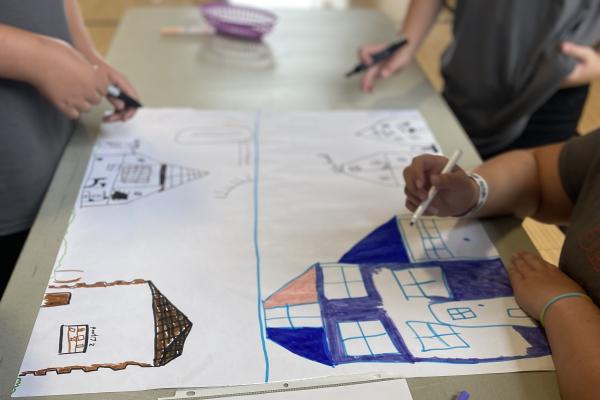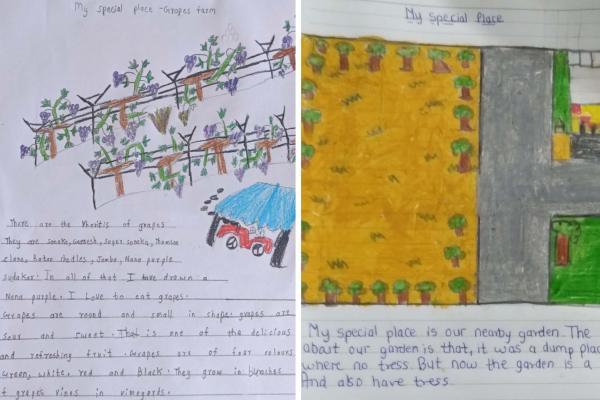Local Action, Global Impact Activity: Studying Community and Place
In this series, “Local Action, Global Impact,” we’re sharing Education for Sustainability activities and resources for teachers. This is Part One of the series.
Sustainability. Often the word brings to mind things like recycling or solar panels. Those things are part of the story…but only part.
When we talk about sustainability, we’re talking about three core concepts, often called the 3 E’s of sustainability:
- Environment
- Equity
- Economy
More specifically, we’re looking for the intersection of economic vitality, ecological integrity, and social equity. Find the balance where each of these criteria are met, and that’s the center of sustainability.
Education for Sustainability (EFS) is an approach that empowers students to strive for, and thrive in, a more sustainable future. This is learning that links knowledge, inquiry, and action so students can create the conditions for sustainability now and in their adult lives.
Activities
Here are two activities we often use to help students explore their relationship to, and the uniqueness of, where they live, cultivating knowledge of place. Rooting learning in the natural and human communities that students are part of is a core tenet of EFS.
These projects help students share their important places — or dream about the places they want to create — as they reflect on what they know and how they feel about community. “Vision is really important,” explains Emily Hoyler, a Shelburne Farms educator and Professional Development Coordinator for the Tarrant Institute for Innovative Education. “It helps us know what we’re moving towards.”
Activity: Visioning
In this activity, students develop a vision for their community, an important step in successfully implementing any community project.
Opening
Ask students to close their eyes and imagine an ideal place to live in. If they were to walk around in this neighborhood, what would they see? What would they hear? What would they smell? Who or what would surround them? As students keep moving, ask them to keep taking in details. What’s happening in this place? How would this ideal neighborhood function? What would make it unique? Does anyone else live there? How do they get what they need and want?
Procedure
- Now have them draw and label what they imagined. Encourage each student to include as many details as possible so that others looking at their drawing can distinguish features of that neighborhood. (If students struggle with drawing, encourage them to make a list or write a narrative explaining various details of their neighborhood.)
- When the drawings are completed, have students list the various features included.
- Then ask, “What did you include that makes your neighborhood so ideal?” As they reply, list the features that students included on chart paper.
- When all students have shared their features, discuss whether the features they included are features of a healthy and safe neighborhood.
- Discuss and star features that contribute to a healthy and safe neighborhood. Group common features and create headings for each group (for example: food; education; housing).
- Ask students if there are any features of safe and healthy neighborhoods that are missing. Create headings for these features. Discuss how these features contribute to safe and healthy neighborhoods.
- As a group, write a definition for an ideal neighborhood. Write the headings that students thought of under the definition.
Reflection
Discuss what you discovered. Ask each student to share one way in which they think you could evaluate how your neighborhood measures up to this ideal neighborhood.
Activity: My Special Place
Students reflect on a special place in their neighborhood and then draw a map of that place.
Opening
Read Wendell Berry’s quote:
“If you don’t know where you are, you don’t know who you are.” — Wendell Berry
Ask students what they think the quote means, and note that this reflection may look very different for different students, including those who are New Americans.
Procedure
- Ask students to describe their place and whether they have a special place within their neighborhood or community.
- Have students close their eyes and pretend they are in the place where they feel most comfortable and happy. This place is really special to them. It is a place all their own. Tell them to imagine they are walking around this special place. What do they see? What makes this place special? How would they describe it? Draw it? Ask them to spend a few more moments getting to know this special place.
- When students open their eyes, give them each a piece of paper. Have each student make a list of features of their special place. When they have finished making the list, have them draw a map.
- When students have finished their maps, ask for volunteers to share their maps and describe the features that make their place unique or special.
Reflection
Have students share one word that makes their place special.
These activities were adapted from writings by Emily Hoyler and the Shelburne Farms publication, "Healthy Neighborhoods, Healthy Kids." Discover this and other resources and programs for educators.
Read more about the Education for Sustainability approach from Emily Hoyler.


